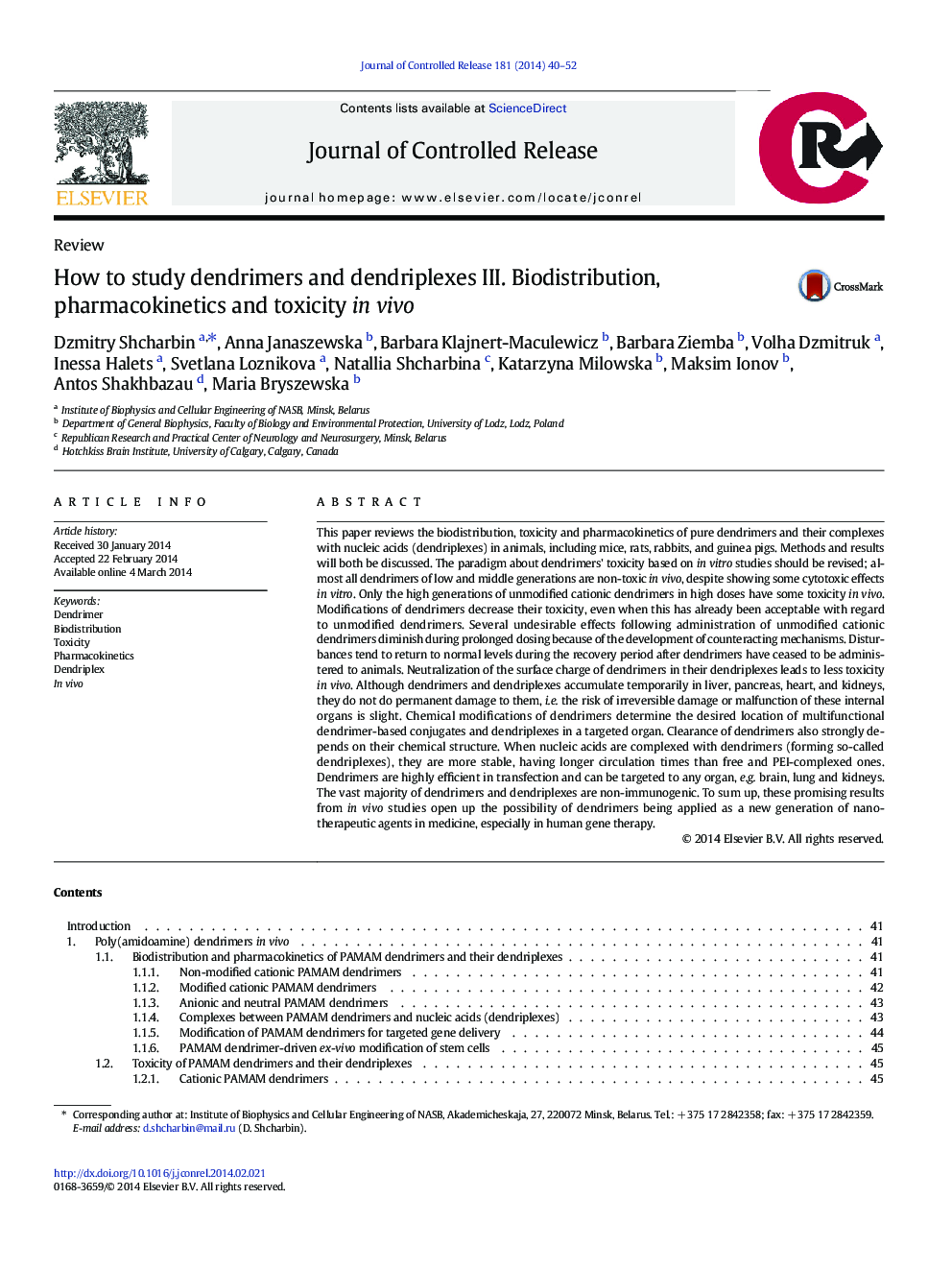| کد مقاله | کد نشریه | سال انتشار | مقاله انگلیسی | نسخه تمام متن |
|---|---|---|---|---|
| 1424074 | 1509068 | 2014 | 13 صفحه PDF | دانلود رایگان |

This paper reviews the biodistribution, toxicity and pharmacokinetics of pure dendrimers and their complexes with nucleic acids (dendriplexes) in animals, including mice, rats, rabbits, and guinea pigs. Methods and results will both be discussed. The paradigm about dendrimers' toxicity based on in vitro studies should be revised; almost all dendrimers of low and middle generations are non-toxic in vivo, despite showing some cytotoxic effects in vitro. Only the high generations of unmodified cationic dendrimers in high doses have some toxicity in vivo. Modifications of dendrimers decrease their toxicity, even when this has already been acceptable with regard to unmodified dendrimers. Several undesirable effects following administration of unmodified cationic dendrimers diminish during prolonged dosing because of the development of counteracting mechanisms. Disturbances tend to return to normal levels during the recovery period after dendrimers have ceased to be administered to animals. Neutralization of the surface charge of dendrimers in their dendriplexes leads to less toxicity in vivo. Although dendrimers and dendriplexes accumulate temporarily in liver, pancreas, heart, and kidneys, they do not do permanent damage to them, i.e. the risk of irreversible damage or malfunction of these internal organs is slight. Chemical modifications of dendrimers determine the desired location of multifunctional dendrimer-based conjugates and dendriplexes in a targeted organ. Clearance of dendrimers also strongly depends on their chemical structure. When nucleic acids are complexed with dendrimers (forming so-called dendriplexes), they are more stable, having longer circulation times than free and PEI-complexed ones. Dendrimers are highly efficient in transfection and can be targeted to any organ, e.g. brain, lung and kidneys. The vast majority of dendrimers and dendriplexes are non-immunogenic. To sum up, these promising results from in vivo studies open up the possibility of dendrimers being applied as a new generation of nano-therapeutic agents in medicine, especially in human gene therapy.
Figure optionsDownload high-quality image (180 K)Download as PowerPoint slide
Journal: Journal of Controlled Release - Volume 181, 10 May 2014, Pages 40–52